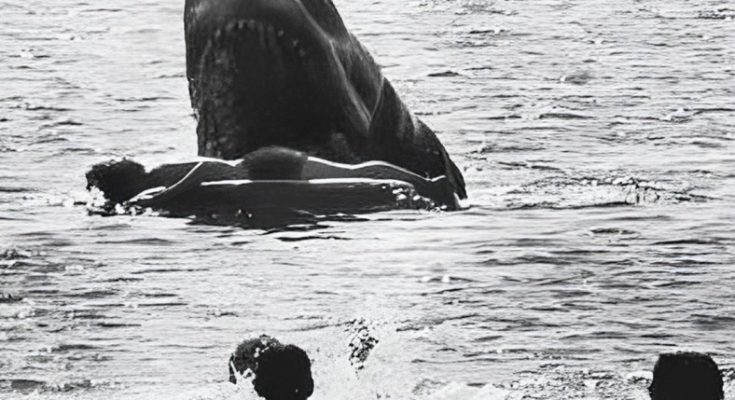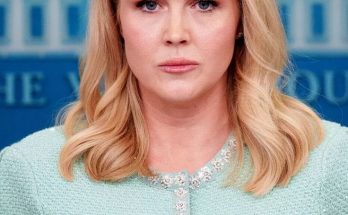Few movies have left an impact as lasting and terrifying as Jaws. This 1975 classic not only redefined the thriller genre but also turned the ocean into a source of fear for millions. Directed by a young Steven Spielberg, Jaws was a groundbreaking masterpiece that remains as suspenseful today as it was decades ago. But beneath its cinematic perfection lies a treasure trove of behind-the-scenes stories, bloopers, and deleted moments that only add to its mystique. Did you know there’s a chilling deleted scene that might have outdone the shark itself? Let’s dive into the fascinating world of Jaws and uncover its hidden secrets.
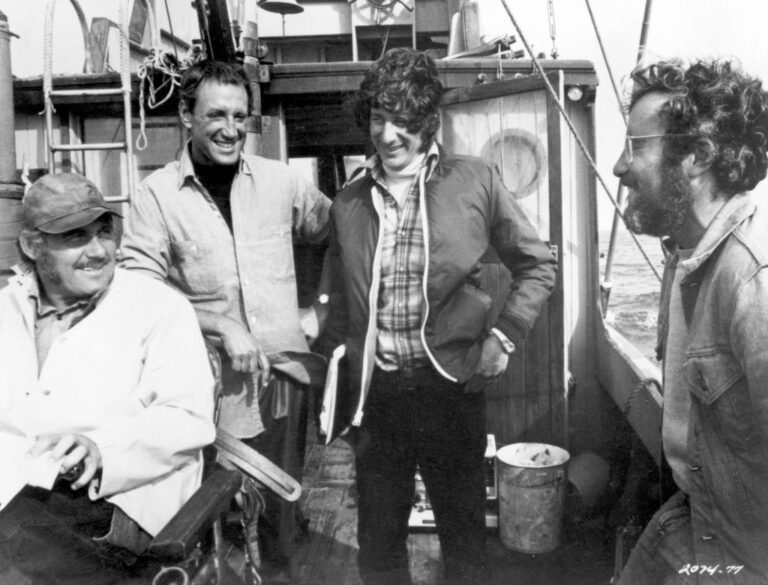
The Birth of a Classic: The Making of Jaws
Before it became a cultural phenomenon, Jaws started as a novel by Peter Benchley, published in 1974. The book captivated producers Richard D. Zanuck and David Brown, who bought the film rights before it was even released. They saw potential in the terrifying tale of a great white shark terrorizing a small coastal town.
Interestingly, Spielberg wasn’t the first choice to direct the film. He was a young, relatively unknown filmmaker at the time, but his passion and vision won over the producers. And what a decision it turned out to be—Spielberg turned Jaws into a cinematic masterpiece that earned over $476.5 million worldwide, becoming the first true summer blockbuster.
Iconic Moments That Almost Didn’t Happen
The Legendary Line: “You’re Gonna Need a Bigger Boat”
Chief Brody’s iconic line, “You’re gonna need a bigger boat,” is one of the most quoted in film history. What makes it even more memorable is that Roy Scheider ad-libbed the line on set.
The moment occurs when the shark makes its first full appearance, startling Brody as he chums the water. During test screenings, audiences were so shocked by the shark’s sudden appearance that they missed the line. To ensure it landed, Spielberg extended the scene and boosted the volume of Scheider’s delivery.
This improvisation not only added authenticity to the film but also cemented the line as one of the greatest in movie history.
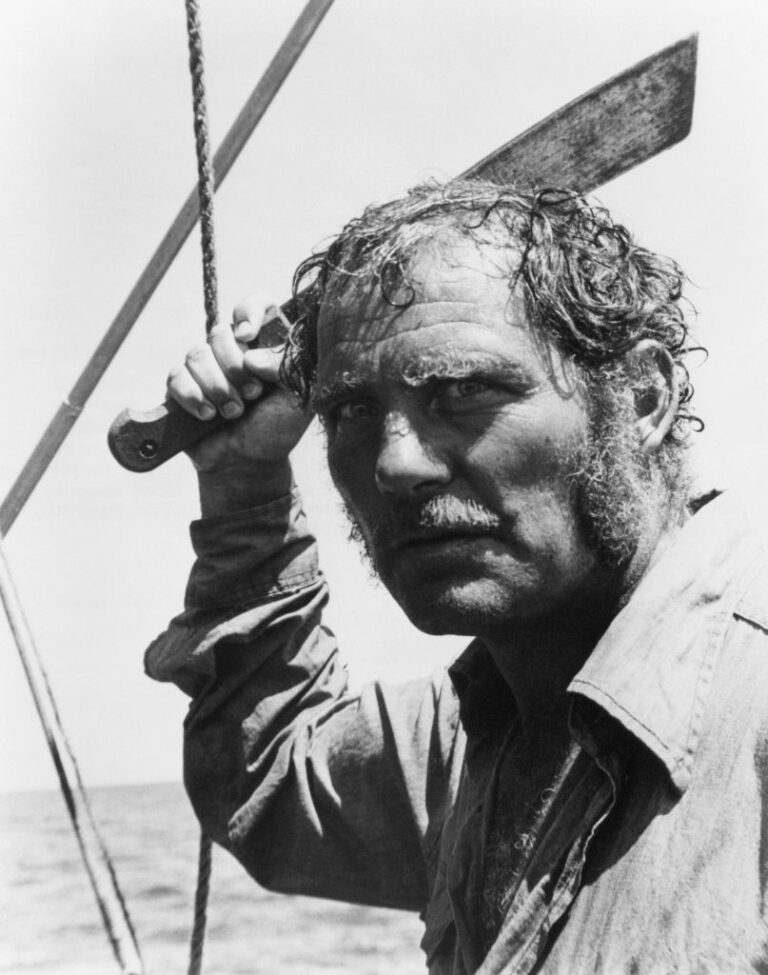
John Williams’ Two-Note Masterpiece
No discussion of Jaws is complete without mentioning its haunting score, composed by John Williams. The two-note theme, which builds tension with every repetition, became synonymous with impending danger.
When Williams first played the theme for Spielberg, the director thought it was a joke. But the simplicity and suspense of the score proved to be a stroke of genius. Spielberg later admitted that without Williams’ music, Jaws would have been only half as successful.
Behind-the-Scenes Drama: The Shark That (Almost) Sank the Film
The mechanical shark, nicknamed “Bruce” after Spielberg’s lawyer, was a technical nightmare. Its constant malfunctions forced Spielberg to rethink how the shark would appear on screen. Instead of showing it in full view, Spielberg relied on suspense, using shadows, fins, and Williams’ score to create tension.
This unplanned creative decision turned out to be a blessing in disguise. By keeping the shark hidden for much of the film, Spielberg amplified the fear of the unknown—a technique that has inspired countless filmmakers since.

Robert Shaw vs. Richard Dreyfuss: A Real-Life Rivalry
The tension between Quint (Robert Shaw) and Hooper (Richard Dreyfuss) in the film wasn’t entirely acting. Off-screen, Shaw and Dreyfuss had a contentious relationship that added to their on-screen dynamic.
Shaw, who struggled with alcoholism, often taunted Dreyfuss, challenging him to perform dangerous stunts like climbing the mast of the boat and jumping into the ocean. On one occasion, Shaw even sprayed Dreyfuss with a fire hose during filming.
Despite their clashes, their performances were electric, particularly during the scenes on the Orca. Shaw’s portrayal of Quint, especially during the USS Indianapolis speech, remains one of cinema’s most chilling moments.
The USS Indianapolis Speech: A Haunting Masterpiece
The USS Indianapolis monologue is one of the most memorable scenes in Jaws, but its creation is shrouded in mystery. Playwright Howard Sackler wrote the initial draft, which was expanded by screenwriter John Milius. However, it was Robert Shaw who fine-tuned the speech, adding depth and emotion.
Shaw initially tried to perform the scene while drunk, thinking it would add authenticity. When the results were unusable, he apologized to Spielberg and delivered a flawless take the next day. His performance captured the horror and tragedy of the real-life USS Indianapolis disaster, leaving audiences spellbound.
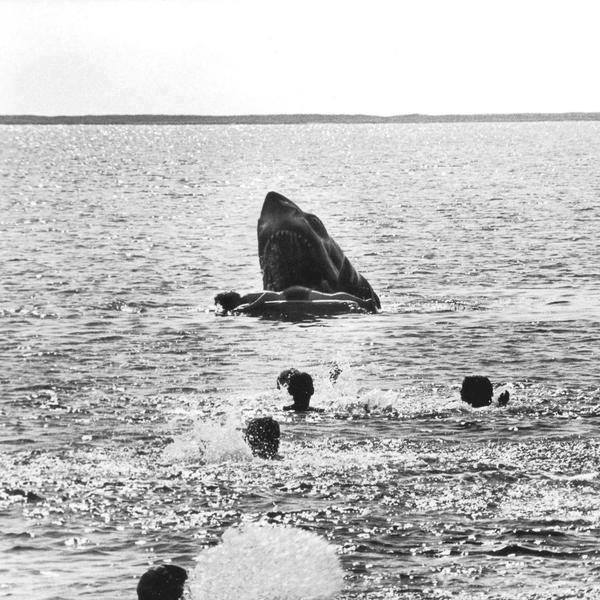
The Deleted Scene That Could Have Changed Everything
One of the most terrifying moments in Jaws is the death of Alex Kintner, the young boy attacked by the shark while floating on a raft. Originally, Spielberg planned to show the shark breaking the surface and devouring Alex in full view.
However, the mechanical shark’s malfunctions made the scene difficult to film. When they finally captured the shot, producers worried it was too graphic for audiences and might jeopardize the film’s PG rating. As a result, the scene was trimmed, leaving much of the attack to the imagination.
This decision aligned with Spielberg’s less-is-more approach, proving that sometimes, what you don’t see is even scarier than what you do.
The Alex Kintner Sandwich Reunion
Years after Jaws was released, Lee Fierro, who played Alex Kintner’s grieving mother, walked into a seafood restaurant and noticed a menu item called the “Alex Kintner Sandwich.” Curious, she mentioned to the staff that she had played Mrs. Kintner in the film.
To her surprise, Jeffrey Voorhees, the actor who played Alex Kintner, was working at the restaurant. The two hadn’t seen each other since filming, and their unexpected reunion was a heartwarming moment for fans of the film.
Unforgettable Bloopers and Fun Facts
The Changing Barrels
In several scenes, the number of yellow barrels on the Orca magically changes. Despite sending three barrels into the shark, the crew somehow always seems to have extras on hand.
The Orca’s Ever-Changing Paint Job
Sharp-eyed viewers might notice that the word “ORCA” on Quint’s boat alternates between rusty and shiny throughout the film.
The Cherry Tree Blooper
At the beginning of the film, a cherry tree is shown in full bloom. However, the story takes place in July, long after cherry blossoms would have fallen.
Robert Shaw’s Tragic End
Robert Shaw’s performance as Quint is unforgettable, but sadly, the actor’s life was cut short just three years after Jaws was released. Shaw died of a heart attack in 1978 at the age of 51.
His portrayal of Quint remains one of the highlights of Jaws, and his presence is deeply missed in the world of cinema.
Why Jaws Is Still Terrifying After All These Years
What makes Jaws so timeless? It’s the perfect combination of suspense, storytelling, and unforgettable performances. Spielberg’s innovative approach, combined with John Williams’ score and a stellar cast, created a film that continues to captivate audiences.
Even its imperfections—like the mechanical shark’s malfunctions—added to its charm, proving that necessity is the mother of invention.
So, the next time you watch Jaws, keep an eye out for its hidden bloopers and behind-the-scenes quirks. They’re part of what makes this film a masterpiece, reminding us that even in its flaws, Jaws is a cinematic triumph.
Don’t forget to share your favorite Jaws moments and revisit this classic whenever you’re ready to take another dive into the deep. But beware—because even after all these years, “You’re gonna need a bigger boat.”
